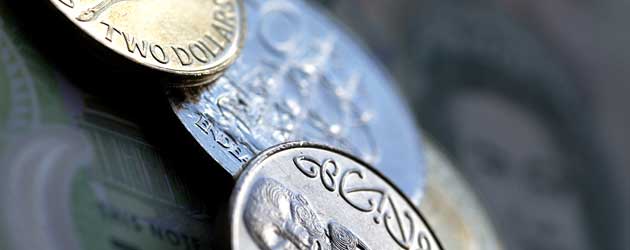 Before the weekend the Pound was able to trim its recent drop against the New Zealand Dollar as a result of provocative hints regarding the timeline for the hiking of UK interest rates.
Before the weekend the Pound was able to trim its recent drop against the New Zealand Dollar as a result of provocative hints regarding the timeline for the hiking of UK interest rates.
The GBP/NZD pairing clawed back 0.30 per cent as Bank of England Governor Mark Carney surprised investors by intimating that borrowing costs could be increased before the spring of next year.
Some economists have been betting that the UK’s over performing fundamentals could justify a rate increase as early as November, and it seems that even Carney has come to terms with the fact that interest rates can’t be held at record lows for too much longer.
Although he did highlight the economic risks posed by the increase of rates, Carney observed that; ‘there’s already great speculation about the exact timing of the first interest rate hike and this decision is becoming more balanced’ although he added that any hiking cycle would be limited and gradual.
After his words the Pound was up on its peers, and currency strategist Michael Sneyd stated; ‘Carney has helped deliver a re-pricing of the market. Even from here there is more room for the market to bring forward rate hiking. We continue to like the Pound.’
Earlier this week the New Zealand Dollar posted widespread gains in response to the news that the Reserve Bank of New Zealand issued an interest rate hike for the third time in four months.
The RBNZ became the first developed nation central bank to embark on a rate-raising cycle and while dipping dairy prices and faltering growth in China did weigh on New Zealand’s economic outlook, it appears that the Reserve Bank has every intention of continuing on its current path.
Not even cautionary comments from the RBNZ’s assistant Governor John McDermott ere enough to push the ‘Kiwi’ lower in the aftermath of the rate decision.
McDermott asserted; ‘The terms of trade could be a turning point, we’re certainly getting prices for dairy falling. The New Zealand Dollar is a commodity currency. It should move and if people were pricing it right, now is the time for it to be moving down. The financial markets haven’t really moved the currency too much, yet its fundamentals have dropped a bit, and we really want them to focus on that point. The FX market should be looking at this.’
However, the New Zealand Dollar was still able to brush 87 US cents and maintain a bullish relationship with several of its rivals.
That being said, the Pound’s ability to recoup the losses inspired by the RBNZ decision was aided by the fact that UK construction output accelerated by more than envisaged in April on a year-on-year basis. Output was up 4.6 per cent following a positively revised annual increase of 6.8 per cent in March. Economists had projected that output would rise by 2.9 per cent on an annual basis.
Next week won’t be quite as data-heavy as the last five days have been, but considerable volatility in the GBP/NZD pairing could still occur as a result of the UK’s inflation figures and retail sales data as well as the publication of minutes from the most recent Bank of England policy meeting. While the BoE opted to leave policy unaltered, the minutes might show division in the ranks regarding interest rates, which could be beneficial for the Pound.
Reports for New Zealand, like the nation’s consumer confidence index and GDP data, will also have an impact on the ‘Kiwi’s performance.
New Zealand Dollar (NZD) Exchange Rates
[table width=”100%” colwidth=”50|50|50|50|50″ colalign=”left|left|left|left|left”]
Currency, ,Currency,Rate ,
New Zealand Dollar, ,US Dollar,0.8552,
,US Dollar,0.8552,
New Zealand Dollar, ,Euro,0.6382,
,Euro,0.6382,
New Zealand Dollar, ,Australian Dollar,0.9207,
,Australian Dollar,0.9207,
New Zealand Dollar, ,Pound Sterling,0.5105,
,Pound Sterling,0.5105,
US Dollar, ,New Zealand Dollar,1.1535,
,New Zealand Dollar,1.1535,
Euro, ,New Zealand Dollar,1.5656,
,New Zealand Dollar,1.5656,
Australian Dollar, ,New Zealand Dollar,1.0859,
,New Zealand Dollar,1.0859,
Pound Sterling, ,New Zealand Dollar, 1.9582,
,New Zealand Dollar, 1.9582,
[/table]

Comments are closed.